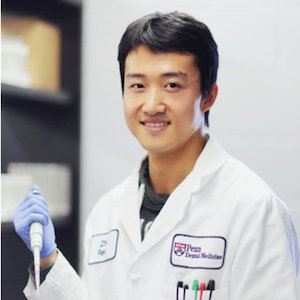
Zhi Ren
 Zhi Ren |
Ren, Zhi1, Jeckel, Hannah2, Simon-Soro, Áurea3, Xiang, Zhenting1, Drescher, Knut2, Koo, Hyun1
1University of Pennsylvania School of Dental Medicine, Department of Orthodontics, Department of Preventive and Restorative Sciences, Divisions of Community Oral Health & Pediatric Dentistry
2University of Marburg, Max Planck Institute for Terrestrial Microbiology
3University of Seville, School of Dentistry
Composite organisms refer to a collection of interacting individuals which behave as a single unit with functional benefits and are found in all domains of life. The fungal-bacterial partnership in human microbiome has been associated with many biofilm-related diseases, including severe early childhood caries. Here, we report a Candida-streptococcal coaggregate formed in human saliva which co-colonizes apatitic surface with composite organism-like functionalities.
MethodsA coaggregation model of Candida albicans and Streptococcus mutans was developed using pooled human saliva and saliva-coated hydroxyapatite (sHA). The spatial organization and functional benefits (antimicrobial/mechanical resistance) of the colonized aggregates were assessed by super-resolution time-lapse imaging coupled with flow-cell microfluidics. The growth dynamics, spatial organization and expansion of individual aggregates were tracked in real-time via precise labelling and computational processing using BiofilmQ, an optimized image analysis platform for biofilms. Genetic and biochemical factors modulating the enhanced functionality were also investigated.
ResultsC. albicans and S. mutans self-assembled into a spatially structured coaggregate comprised of bacterial clusters, a network of hyphae and extracellular polysaccharide (EPS) matrices. The coaggregate showed high binding affinity to sHA, displaying enhanced stability against external sheer removal and increased resistance against antimicrobials compared to aggregates of either species alone (p<0.05). The co-aggregation with enhanced functionalities was modulated by three major factors: Candida hyphal morphogenesis, agglutinin-like sequence proteins and Streptococcal EPS. Unexpectedly, we discovered a distinctive “hitch-hiking” growth behavior, whereby S. mutans aggregates were found attached and “riding” onto elongating hyphae, promoting bacterial spreading across the apatitic surface. Notably, the composite organism-like properties were abrogated when either the bacterial or fungal counterpart was individually inactivated via specific antimicrobials or disruptive agents, indicating a highly interdependent partnership.
ConclusionC. albicans and S. mutans can form a self-organizing coaggregate in human saliva and initiate biofilms as a single unit with composite organism-like functionalities.